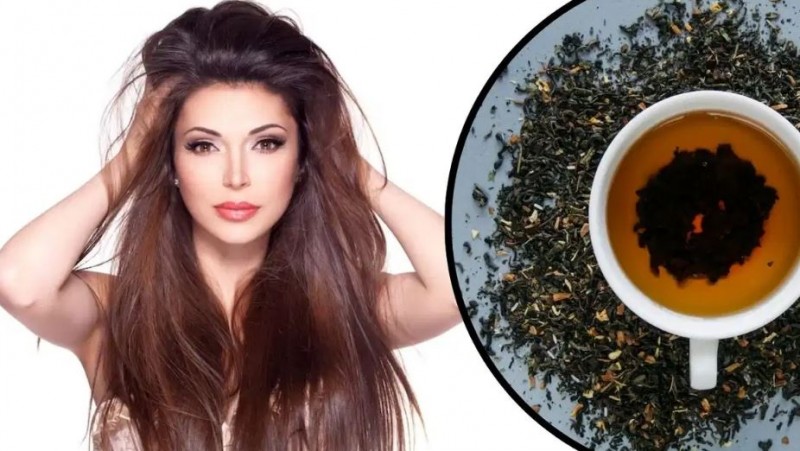
Tea, a beloved beverage enjoyed by millions around the world, not only provides comfort in a cup but also leaves behind a residue often overlooked – used tea leaves. In this comprehensive guide, we delve into the multifaceted uses of these discarded tea leaves, exploring creative and eco-friendly ways to repurpose them. From enhancing hair health to serving as a natural deodorizer, and even nourishing plants, the possibilities are vast.
Tea Leaves as Natural Hair Conditioner:
a. Straining and Boiling:
When tea leaves are initially used to brew tea, they undergo a transformation, releasing essential oils and compounds that can benefit hair health. The first step in repurposing these leaves for hair care involves straining them to remove any loose tea particles. Once strained, the tea leaves can be boiled again in water, extracting the remaining goodness. This process ensures a clean and concentrated tea solution.
b. Application as Hair Conditioner:
The cooled tea water can be used as a natural hair conditioner after regular shampooing. Applying this tea-infused water to the hair provides a conditioning effect, making the hair soft and adding a natural shine. The antioxidants in tea also contribute to a healthier scalp. Consistent use of this DIY conditioner can gradually improve the overall texture and appearance of the hair.
c. Benefits of Regular Use:
The natural conditioning properties of tea leaves help in reducing frizz, preventing split ends, and maintaining the moisture balance in the hair. Additionally, the mild caffeine content in tea stimulates hair follicles, promoting hair growth. This cost-effective and chemical-free alternative to commercial hair conditioners makes use of a resource that would otherwise be discarded.
Tea Leaves as a Body Scrub:
a. Preparation of Tea Leaf Scrub:
Repurposing tea leaves into a homemade body scrub involves cleaning and mixing them with a nourishing oil. Oils like jojoba, olive, or almond can be used to create a scrub that not only exfoliates the skin but also provides hydration. This simple DIY solution offers a natural and sustainable alternative to commercial body scrubs that may contain harmful additives.
b. Exfoliation and Skin Benefits:
Using the tea leaf scrub during a shower helps in removing dead skin cells, unclogging pores, and improving blood circulation. The antioxidants present in tea leaves contribute to skin rejuvenation and protection against free radicals. The nourishing oils leave the skin feeling soft and moisturized, making it an ideal addition to a skincare routine.
c. Eco-Friendly Skincare:
By repurposing tea leaves into a body scrub, individuals can reduce their reliance on single-use skincare products and contribute to a more sustainable beauty regimen. The scrub can be easily customized with different oils and scents, offering a personalized and eco-friendly alternative.
Tea Leaves as Natural Deodorizer:
a. Absorption of Odors:
One of the lesser-known uses of tea leaves is their ability to act as a natural deodorizer. Placing used tea leaves in containers around the house can help absorb and neutralize unwanted odors. This method is particularly effective in confined spaces like refrigerators, closets, or drawers.
b. Freshening Household Spaces:
Utilizing tea leaves as a deodorizer not only eliminates odors but also imparts a subtle and natural fragrance to the surroundings. This eco-friendly alternative reduces the need for synthetic air fresheners, contributing to a healthier indoor environment.
c. Reusability and Sustainability:
The reusability of tea leaves for deodorizing purposes aligns with sustainable practices. After brewing a cup of tea, the same leaves can be dried and reused multiple times as a deodorizer. This not only minimizes waste but also extends the life cycle of the tea leaves.
Tea Leaves as Fertilizer for Plants:
a. Drying and Crushing Process:
Repurposing tea leaves as a natural fertilizer involves a simple yet effective process. After brewing tea, the used leaves should be dried thoroughly in sunlight. Once dried, the leaves can be crushed into smaller particles, enhancing their effectiveness as a plant nutrient.
b. Nutrient-Rich Fertilizer:
Tea leaves are rich in nitrogen, potassium, and other essential nutrients that contribute to soil fertility. When sprinkled around the base of plants, the crushed tea leaves act as a slow-release fertilizer, promoting healthy growth. This organic alternative reduces the reliance on synthetic fertilizers, benefiting both plants and the environment.
c. Enhancing Soil Structure:
The organic matter present in tea leaves improves soil structure, water retention, and aeration. As the tea leaves decompose, they release nutrients gradually, providing a sustainable and long-lasting solution for plant nourishment.
In conclusion, the journey of used tea leaves extends far beyond the teapot. By exploring their potential for natural hair conditioning, skincare, deodorizing, and plant fertilization, individuals can adopt eco-friendly practices that benefit both personal well-being and the environment. As we continue to seek sustainable alternatives in our daily lives, the humble tea leaf emerges as a versatile resource, offering a myriad of possibilities for creative and mindful repurposing. The next time you enjoy a cup of tea, consider the untapped potential within those seemingly spent leaves – a potential waiting to be harnessed for beauty and household applications.
Eating avocado will provide many health benefits
Follow this hair care routine for long and thick hair
Drink jaggery tea instead of sugar in winter, make tea like this and it will never burst